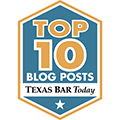Frozen Pipes Can Lead to Expensive Legal Battles
When temperatures drop, one of the most common and costly disasters facing commercial property owners is frozen or burst pipes. These events can cause widespread water damage, interrupt business operations, and spark complicated insurance disputes. Despite the clear cause of loss, many insurers deny or underpay water-related claims, citing exclusions for “negligence,” “maintenance,” or “gradual leaks.” For commercial property managers, knowing how to prevent, document, and respond to these incidents is critical to protecting both your property and your insurance recovery rights.
1. Why Burst Pipes Are a Serious Risk for Commercial Properties
Commercial buildings often have extensive plumbing networks that run through unheated or low-traffic areas—such as basements, stairwells, mechanical rooms, and exterior walls. When temperatures fall below freezing, these lines are highly vulnerable. Even a minor freeze can cause expansion and ruptures, sending thousands of gallons of water through walls, ceilings, and equipment spaces. For multi-story buildings, the damage can spread rapidly through multiple tenants and systems, leading to six-figure losses.
2. Common Causes of Pipe Freezing and Failures
The main causes of burst pipes include inadequate heating, poor insulation, power outages, or malfunctioning thermostats. Neglected maintenance—such as uninsulated sprinkler lines or open loading bay doors—can also contribute. In some cases, insurers argue that these conditions constitute “policyholder negligence,” using this as a reason to deny claims. That’s why prevention and documentation are equally important.
3. Prevention: Preparing Your Building Before Freezing Temperatures Hit
Inspect all plumbing lines in unheated or exposed areas and add insulation or heat tracing where needed. Keep mechanical rooms sealed and heated to at least 55°F. Calibrate thermostats and monitor temperatures remotely during cold snaps. Ensure all building zones maintain consistent warmth, especially overnight or during holidays when occupancy is low. Drain or shut off water supply lines to exterior equipment or seasonal systems.
4. Recognizing Early Warning Signs of a Freeze
Watch for reduced water pressure, frost on exposed pipes, or unexpected condensation. Train on-site staff to respond immediately if water flow stops or leaks appear. Quick action can minimize secondary damage from flooding and mold growth, both of which complicate insurance claims.
5. What to Do Immediately After a Pipe Burst
Shut off the water supply and electricity in affected areas. Call emergency restoration professionals to begin extraction and drying immediately—mold can develop within 24–48 hours. Take high-quality photos and videos before cleanup begins, documenting both the source and resulting damage. Retain samples of damaged materials if possible. Notify your insurer promptly, but do not discard anything until an adjuster has inspected the loss.
6. Insurance Coverage Challenges: Understanding the Gray Areas
Many commercial property policies cover sudden and accidental water discharge from plumbing systems but exclude gradual leaks or maintenance-related failures. The key issue in most disputes is whether the loss was “sudden.” If a pipe bursts suddenly due to freezing, it should be covered. If the insurer argues that corrosion or poor insulation caused a slow leak, they may deny the claim. Maintaining written maintenance records and pre-loss inspection reports helps prove that you took reasonable care.
7. Burst Pipe Documentation Best Practices
After emergency response, compile a full record of the incident: photos, inspection reports, repair invoices, and restoration estimates. If you have HVAC or plumbing service contracts, include those to demonstrate ongoing maintenance. Maintain a log of all communications with your insurer, including claim numbers, adjuster names, and summaries of each conversation.
8. Estimating the True Cost of Water Damage
Water damage claims are often undervalued because insurers only consider visible destruction. However, water can compromise structural materials, electrical systems, and mechanical components hidden behind walls or floors. Hire an independent contractor or building consultant to perform a moisture scan and develop a comprehensive repair estimate.
9. Business Interruption and Secondary Losses
If your operations were disrupted, you may be entitled to business interruption coverage for lost income and ongoing expenses. Carefully track downtime, relocation costs, and employee wages during closure. Insurers often overlook these elements unless you specifically claim them and provide supporting documentation.
10. When to Call a Property Damage Attorney
If your insurer denies, delays, or underpays your burst pipe claim, consult an experienced property damage attorney. The Voss Law Firm has extensive experience handling commercial water damage disputes. We help clients establish cause of loss, challenge improper exclusions, and secure fair compensation for both direct and indirect losses.
Preparation and Legal Knowledge Are Your Best Tools
A burst pipe can happen in minutes but take months to repair. Proper maintenance, timely documentation, and strong legal advocacy can mean the difference between a quick recovery and a prolonged dispute. If your property suffers water damage this winter, contact The Voss Law Firm. Our attorneys help commercial property owners nationwide recover full compensation and protect their businesses from unnecessary financial strain.




















